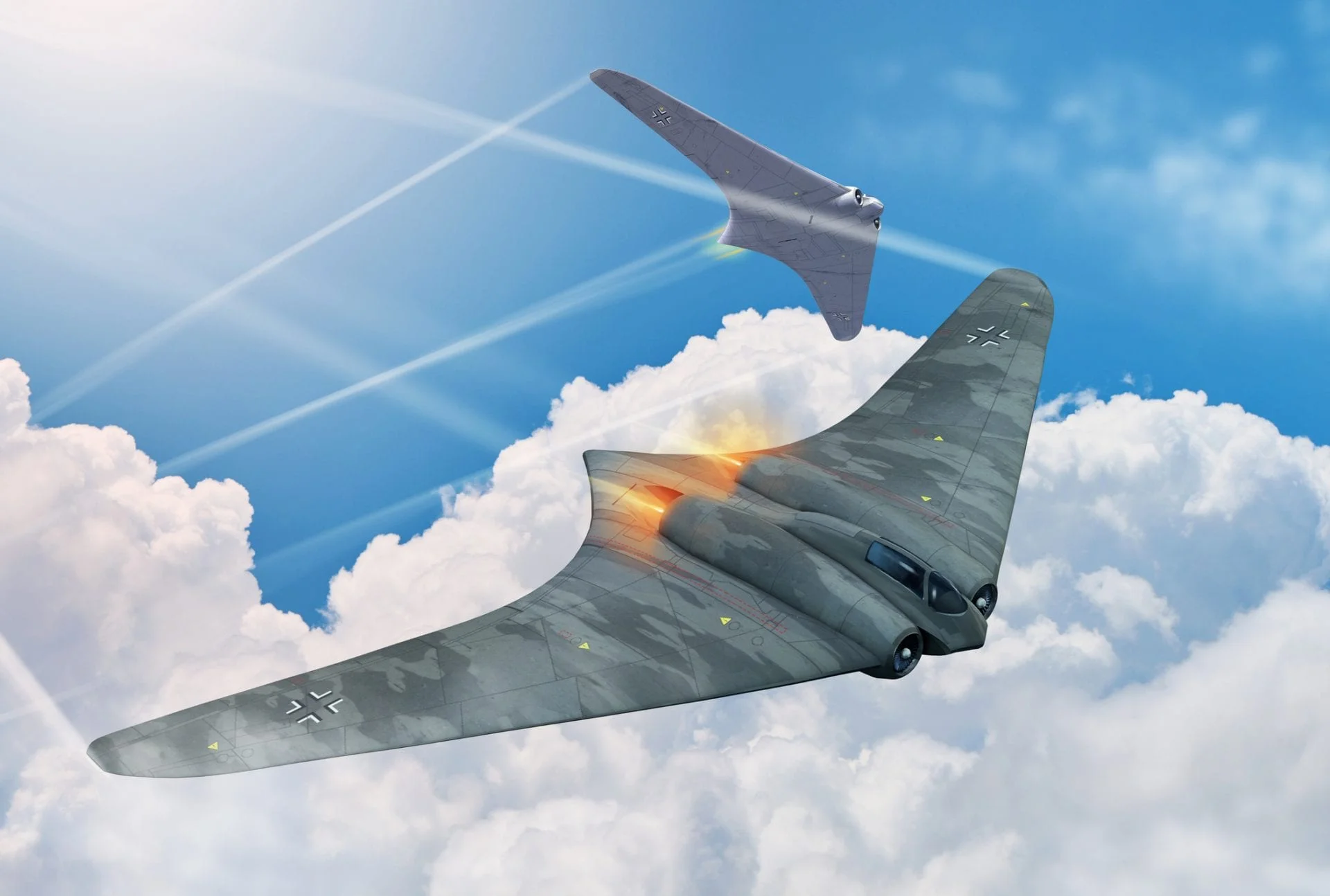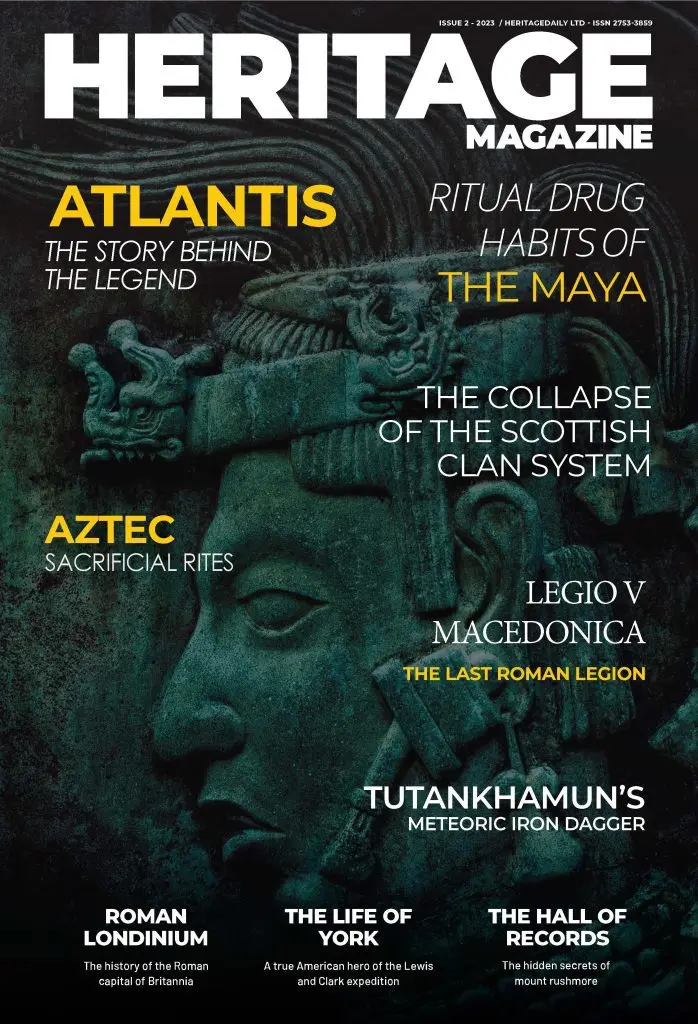Wunderwaffe, meaning “miracle weapon” or “universal solution” in German, was a term coined by the Nazi propaganda ministry for “superweapons” being developed during WW2.
By 1942, German resources were beginning to strain fighting a war on two fronts. The propaganda ministry made regular announcements about the development of revolutionary new weapons which could turn the tide of the war, in the hope of boosting German moral and support for the führer.
Very few Wunderwaffe’s actually made it into the combat theatre, with a majority of designs only remaining a concept or early prototype. Historian Michael J. Neufeld has noted that “the net result of all these weapons, deployed or otherwise, was that the Reich wasted a lot of money and technical expertise (and killed a lot of forced and slave laborers) in developing and producing exotic devices that yielded little or no tactical and strategic advantage”.
Triebflügeljäger
The Triebflügeljäger, meaning “thrust-wing hunter” was the concept design of a vertical take-off and landing interceptor, designed in 1944 by the aircraft manufacturer Focke-Wulf Flugzeugbau AG (one of the predecessor companies of Airbus). The Triebflügeljäg had no wings, instead used a rotor/propeller assembly for lift and thrust, similar to that of a helicopter.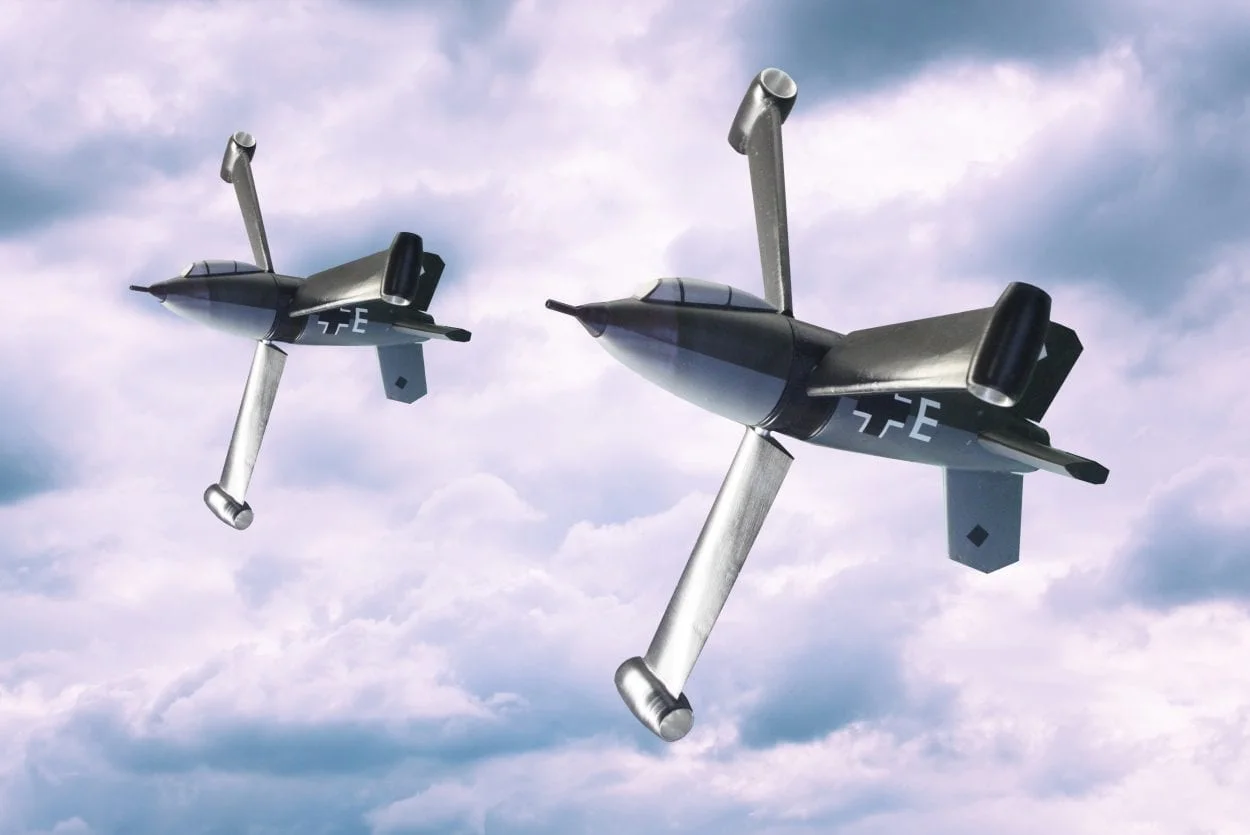
Messerschmitt Me 163 Komet
The Messerschmitt Me 163 Komet was a rocket-powered fighter aircraft that could reach speeds of 1000 km/h. Over 300 Komets were built for deployment in the European combat theatre, but the rapid fuel consumption, and limited area of operation made the Komet only capable of localised point-defence missions.

Schwerer Gustav
The Schwerer Gustav was a large railway gun platform, developed by the Krupp organisation to destroy the main forts of the French Maginot Line. The gun had a 32.5 metre barrel and could fire shells at targets almost 47km’s away. Schwerer Gustav was deployed in 1941, supporting the bombardment during the siege of Sevastopol on the Eastern Front.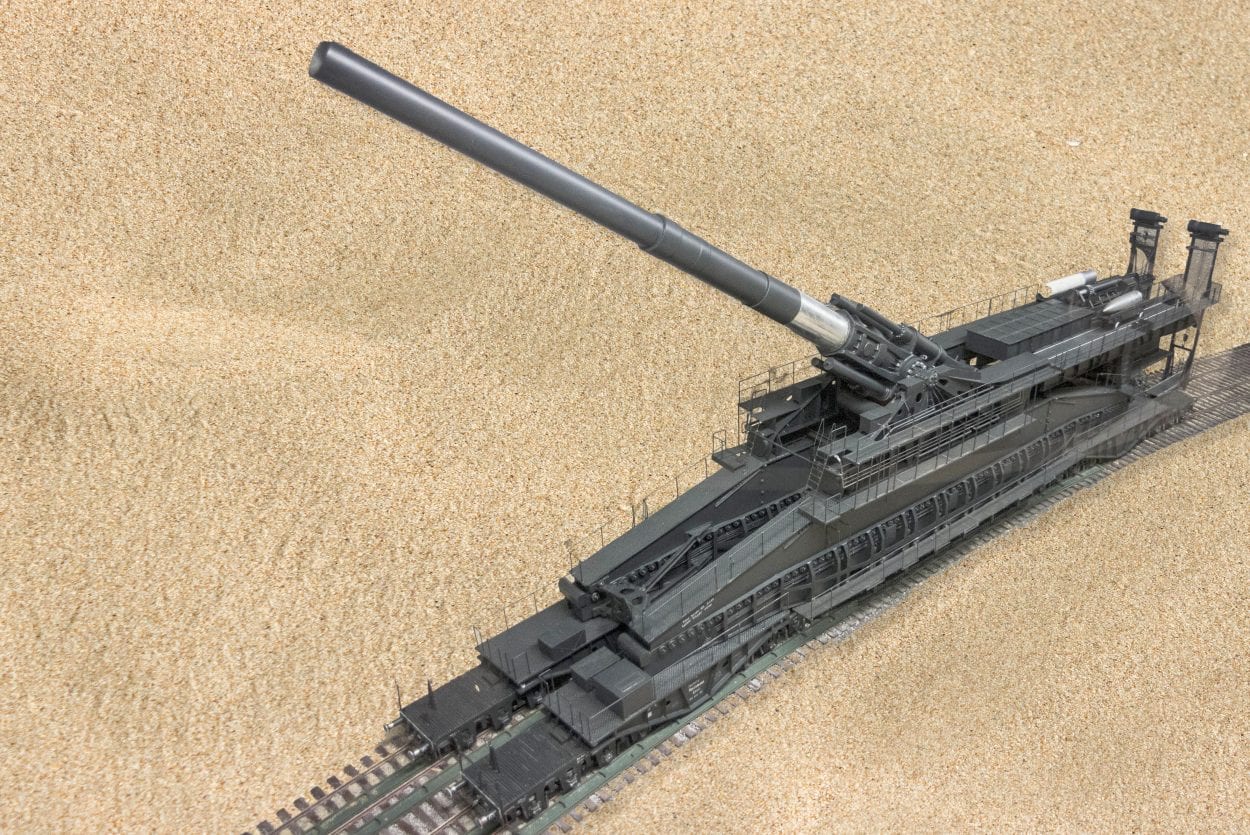
Horten H.XVIII
The Horten H.XVIII was a concept intercontinental bomber, designed by the brothers, Walter and Reimar Horten. The aircraft was proposed as part of an initiative of the German Ministry of Aviation (Reichsluftfahrtministerium) called Amerikabomber, to obtain a long-range strategic bomber for the Luftwaffe that would be capable of striking the United States from Germany.
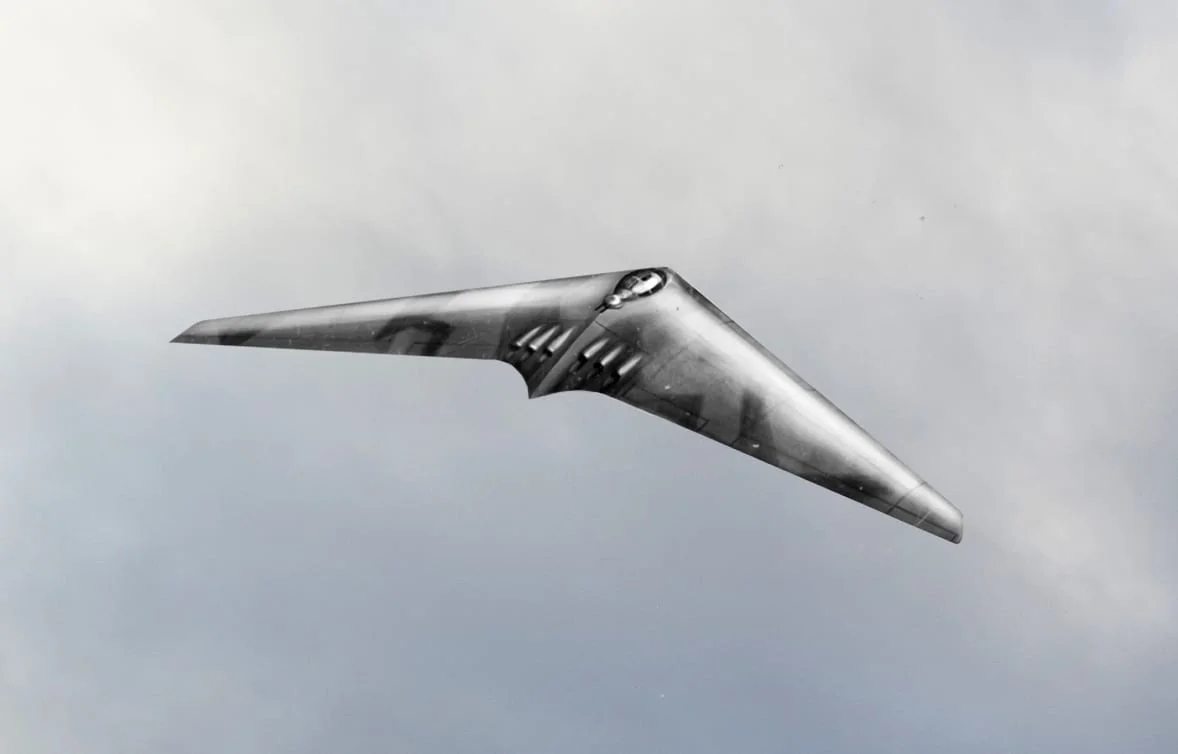
Panzerkampfwagen VIII Maus
The Panzerkampfwagen VIII Maus was a super heavy “break-through” tank, designed to punch holes in enemy lines with a 128 mm PaK 44 anti-tank field artillery gun. The tank was designed by the Austrian-German engineer Ferdinand Porsche (founder of the Porsche car company). Two prototypes were developed between 1943-1944, which were later deployed to defend the High Command of the German Army at Maybach 1 in the final stages of the war.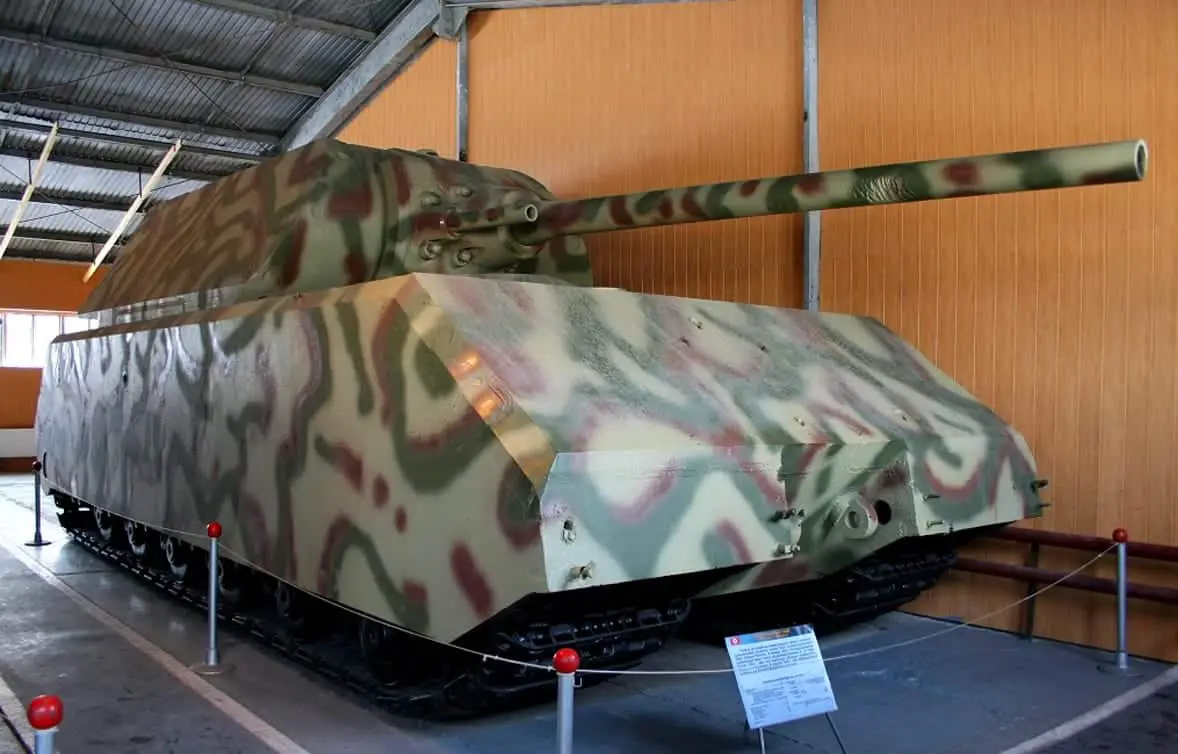
Arado Ar 234 Blitz
Arado Ar 234 Blitz was the first jet-powered bomber introduced into the combat theatre in 1944 by the German aircraft manufacturer Arado Flugzeugwerke. The Arado Ar 234 could reach a speed 780 km/h and operate well above the Allied fighters range at an altitude of 11,000 metres.
FX 1400
The FX 1400, most commonly known as the Fritz X, was the first precision guided anti-ship glide bomb intended to be used against heavily armoured targets such as cruisers and battleships. The FX 1400 was first deployed in 1943, with several successful strikes on British naval and merchant vessels.

Goliath Tracked Mine
The Goliath tracked mine was a remote-controlled demolitions vehicle, used for destroying tanks, disrupting dense infantry formations, and the demolition of buildings or bridges with a 60kg explosive charge. The mine was developed by the manufacturers Borgward and Zündapp, with 7,564 being deployed between 1942–1944.
Aggregat V-1 Flying Bomb
The V-1 “vengeance/retribution weapon 1″ flying bomb was an early cruise missile system designed by the engineers Fritz Gosslau and Robert Lusser, under the codename Kirschkern “cherry stone”. The V-1 started operations in 1944, codenamed Operation Eisbär, with more than 9,521 V-1s launched against targets across Great Britain (mainly London), and at targets across Belgium after the Allied landings.
Aggregat V-2
The V-2 “vengeance/retribution weapon 2″ was a long-range ballistic missile system developed by the Nazi scientist Wernher von Braun (architect of the Saturn V that propelled the Apollo spacecraft to the Moon) and engineer Walter Riedel. Thousands of forced labourers and slaves died in the development and manufacturing of the rocket program, with more than 6,048 V-2’s constructed, and 3,225 launched against sites across Great Britain.

Henschel Hs 298
The Henschel Hs 298 was a rocket-powered mid-wing monoplane air-to-air missile system, designed by the Austrian Scientist Herbert A. Wagner. It was planned to be carried on special launch rails by Dornier Do 217s and Focke-Wulf Fw 190s, but the project was abandoned in 1945 in favour of the X-4.
Ruhrstahl X-4
The Ruhrstahl X-4 was a wire-guided air-to-air missile system developed by the German scientist Dr Max Kramer at the Ruhrstahl AG steel and armaments corporation. The warhead consisted of a 20 kg fragmentation device, designed to be fired at enemy bombers from a Focke-Wulf Ta 183 Huckebein. Production started in 1945, but intense Allied bombing on the manufacturing facilities meant that the X-4 was never deployed in the combat theatre.
Messerschmitt Me 262
The Messerschmitt Me 262, also called the Schwalbe (“Swallow”) was a jet powered fighter bomber and reconnaissance aircraft, developed by the aircraft manufacturer Messerschmitt AG (now part of Airbus). Deployed in 1944, the aircraft has been attributed with the downing of 542 Allied aircraft.

Arado E.555
The Arado E.555 was a concept strategic bomber, proposed by the German aircraft manufacturer Arado Flugzeugwerke as a contender for the Ministry of Aviation’s Amerikabomber initiative. The E.555 would have featured a six-jet, angular flying wing design with remotely operated defensive turrets.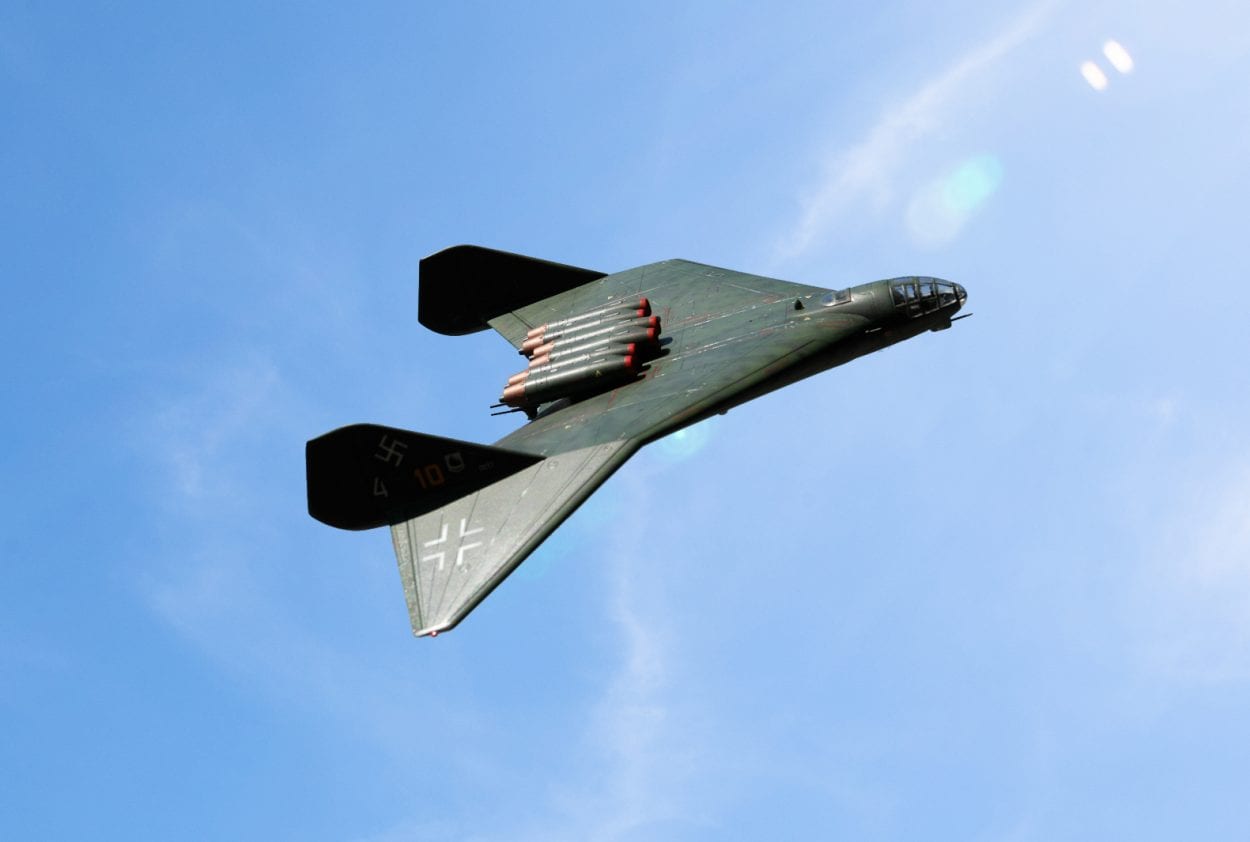
Karl-Gerät
Karl-Gerät, also called the Mörser Karl was a large self-propelled siege mortar designed by the German automotive and defence manufacturer Rheinmeta. Deployed in the combat theatre from 1941, the mortar was capable of firing shells weighing over 2,170 kg at targets 10 km’s away.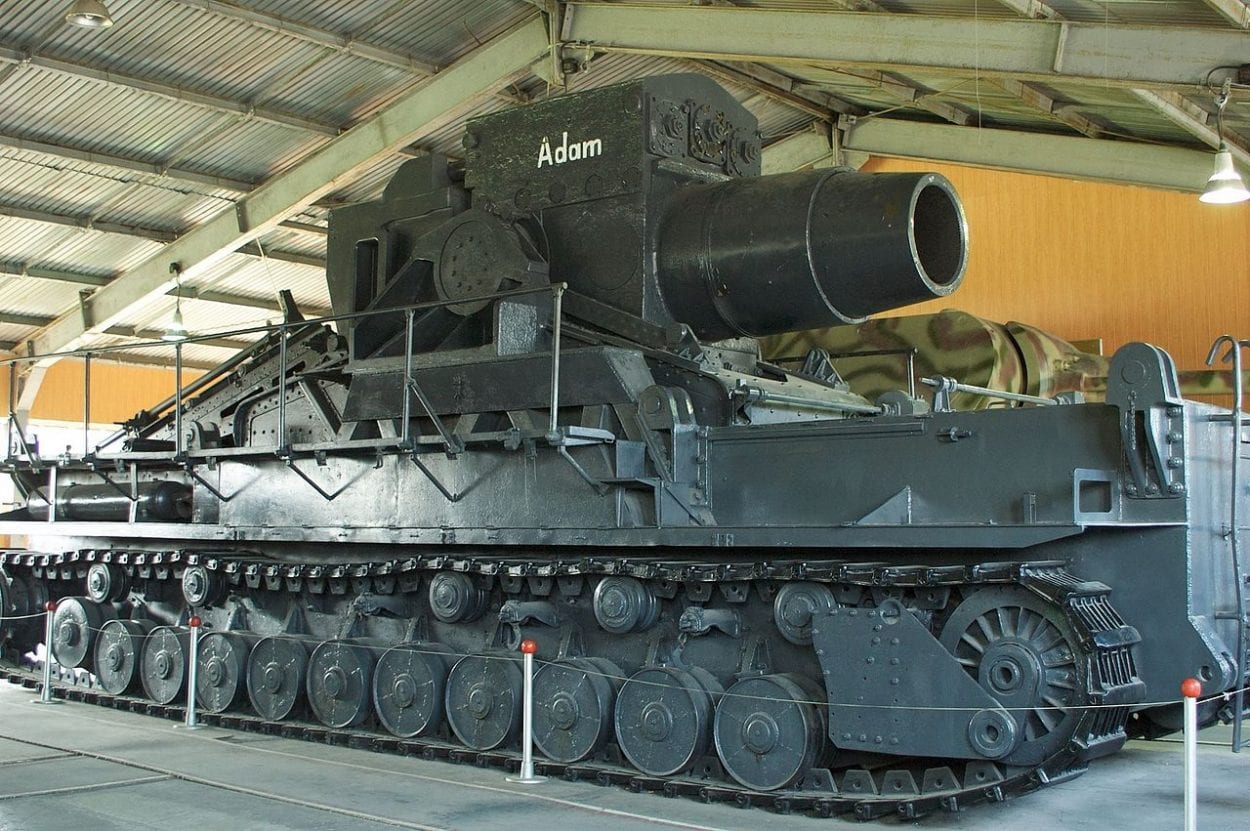
Fieseler Fi 103R Reichenberg
The Fieseler Fi 103R, code-named Reichenberg, was an adapted crewed version of the V-1 flying bomb. The Fieseler Fi 103R was developed by the German Research Institute for Sailplane Flight, intended for high-risk missions where the crew was unlikely to survive.

Horten Ho 229
The Horten Ho 229 was an advanced prototype flying wing designed by Reimar and Walter Horten as a jet fighter/bomber. The Horten Ho 229 was selected as part of the Jäger-Notprogramm (Emergency Fighter Program) for accelerated production of inexpensive “wonder weapons”, to be mass-produced as the designated Go 229 in the final months of the war.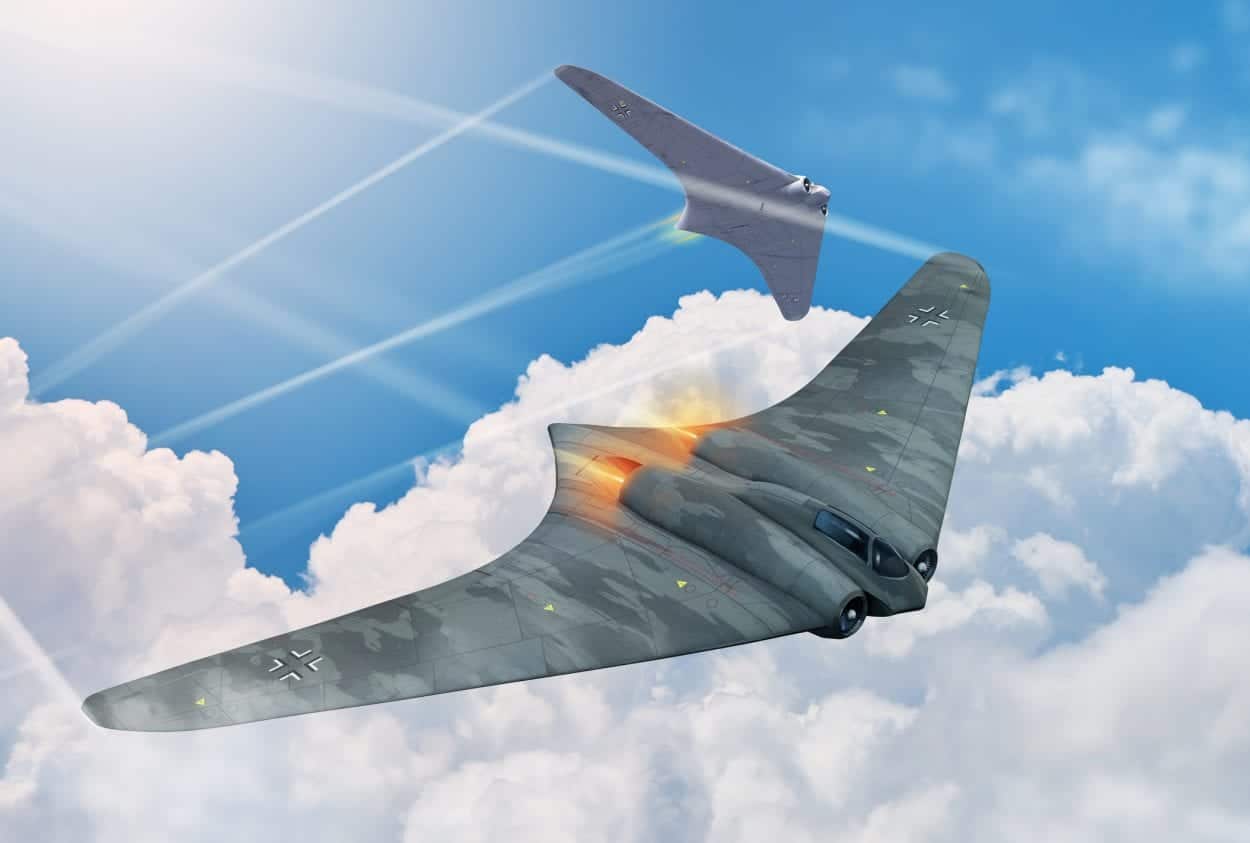
Landkreuzer P. 1000 Ratte
Landkreuzer P. 1000 Ratte was a concept project to develop a 1000-ton tank that could carry a dual 28 cm SK C/34 naval gun turret and several anti-aircraft guns. Sources suggest that the Landkreuzer was proposed by the German arms manufacturer Friedrich Krupp AG, but the project was cancelled by Minister of Armaments Albert Speer in early 1943.
V-3 Cannon
The V-3 “vengeance/retribution weapon 3” was a large-calibre gun that fired propellant charges to increase the velocity of a projectile over hundreds of miles. The Nazi’s planned to use the V-3 to bombard London and the Southeast of England from two large bunker complexes in northern France. Allied bombing destroyed both bunkers, but two similar guns were used to bombard Luxembourg from 1944 to 1945.
Header Image Credit : iStock Licensed

